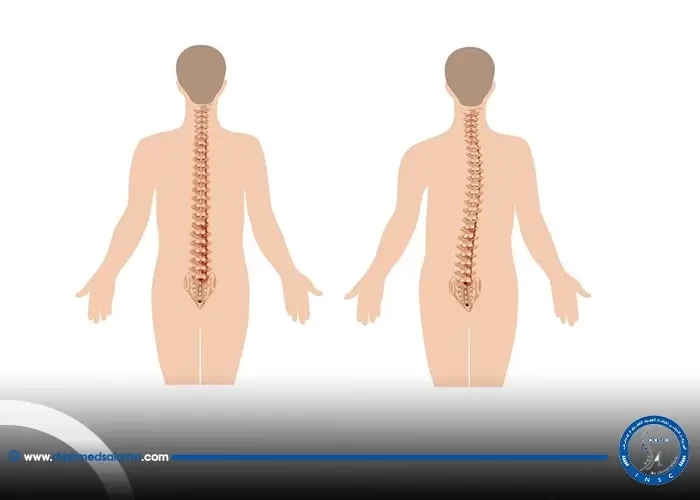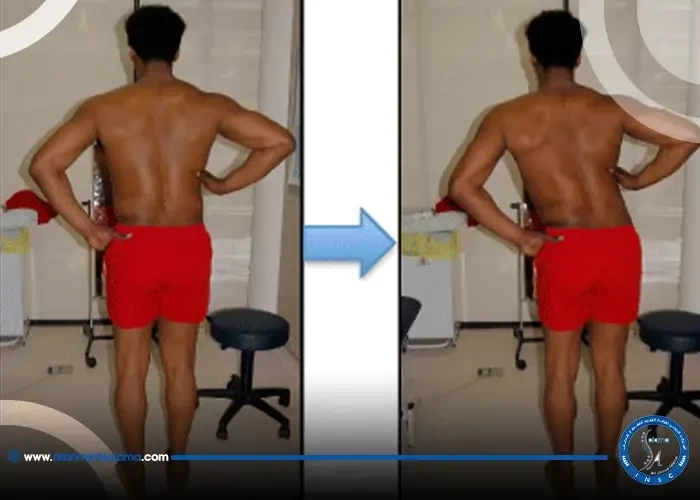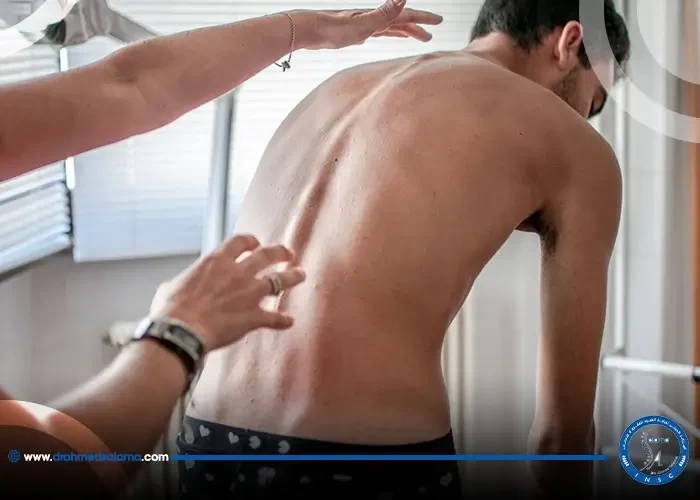Nasr City, 52 El Tayaran Street, in front of the Health Insurance Hospital

Treatment of scoliosis with a belt

Scoliosis has been a topic of concern for many people worldwide. This spine condition is quite common among adolescents, but it can also affect adults. Belt scoliosis treatment has been proven to be one of the most effective ways of treating scoliosis. This method involves the use of belts that are applied to the spinal cord to help straighten the spine. This treatment has been successful in enhancing proper spinal alignment, reducing pain and improving mobility. With this blog post, we aim to provide an in-depth understanding of belt scoliosis treatment in English language for those struggling with this condition.
Introduction to Scoliosis and Bracing
Scoliosis is a condition that affects the spinal alignment, causing it to curve abnormally. Bracing is the main non-surgical intervention used to treat idiopathic scoliosis during growth, hyperkyphosis, and Scheuermann disease. Physical therapy and bracing are used to treat milder forms of scoliosis to maintain cosmesis and avoid surgery. The aim of brace treatment is to stop curve progression and improve appearance/cosmesis. The Boston brace is the most commonly prescribed brace for scoliosis today. Patients can wear scoliosis back braces all the time or at night only. It is essential to choose the right scoliosis brace, and combining bracing with other treatments can yield better results. Understanding the different types of scoliosis braces available and common myths about scoliosis bracing are crucial in making informed decisions about treatment options.
Understanding the Boston Brace
The Boston brace is the most commonly prescribed brace for scoliosis today, and is known as a type of thoracic-lumbar-sacral orthosis. It's a squeezing-style brace that squeezes the spine in an attempt to stop the curve from getting worse as the child grows. The brace is custom-made and fits snugly around the torso, with pads and straps that can be adjusted to provide the optimal amount of pressure. While the Boston brace is known to be superior to other types of bracing in the mid thoracic and lower lumbar curves, it's important to note that the effectiveness of the brace depends on proper fit and usage. That's why it's crucial for healthcare professionals and caregivers to have an understanding of brace design and fabrication, so they can properly manage and suggest modifications to the brace as needed.
Types of Scoliosis Braces Available
In addition to the popular Boston Brace, there are several other types of braces available for the treatment of scoliosis. One such brace is the thoracolumbosacral orthosis (TLSO), which is also known as a low-profile brace. This type of brace is designed to apply corrective pressure to the curve in the spine, specifically in the lumbar and thoracic regions. Another type of brace is the Charleston bending brace, which is designed to be worn only at night and works by placing corrective pressure on the curve opposite to the direction of the curve, with the goal of gradually reducing the curvature. With advancements in technology, there are also now 3D-printed custom braces available, which are tailored to fit each patient's unique body shape and curve pattern. Choosing the right brace is important and should be based on the individual's specific needs and goals for treatment. Consulting with a medical professional and experienced orthotist is recommended.
Benefits of Wearing a Scoliosis Brace
Wearing a scoliosis brace can be a life-changing treatment for children and adults with curved spines. One of the significant benefits is that it can help slow down or even stop the progression of the curve. This can prevent the need for surgery and other more invasive treatments. Wearing a brace regularly can also help alleviate pain caused by scoliosis and improve posture. It can boost self-confidence by helping individuals feel more comfortable and less self-conscious about their appearance. Finally, wearing a scoliosis brace can improve overall quality of life by allowing individuals to engage in activities they may have previously avoided due to discomfort or pain. These benefits make a scoliosis brace a valuable tool in the management of scoliosis.
How Long Do You Need to Wear a Scoliosis Brace?
After receiving scoliosis brace treatment, the question that most patients ask is how long they need to wear the brace for. The duration of the treatment varies according to the severity of the condition and the stage of growth of the patient. The treatment schedule, which includes the number of hours of brace wear each day, will be determined by a team of medical professionals. Typically, patients are advised to wear the brace for 23 hours a day until skeletal maturity is reached. In some cases, the period of treatment can last for months or even years. While it may seem daunting to wear a brace for such an extended period, studies have shown that following the prescribed treatment plan can prevent the progression of scoliosis and reduce the likelihood of surgery. It is crucial to adhere to the treatment plan and wear the brace for the prescribed amount of time to achieve the best possible outcome.
Scoliosis Bracing for Children vs. Adults
Section 6 delves into how scoliosis bracing differs for children and adults. While both age groups can benefit from bracing, treatment will vary depending on the severity of the curve and the rigidity of the spine. Children will typically wear a brace until they stop growing, whereas adults may wear a brace for a shorter period of time. However, in both cases, the goal of bracing is to prevent the progression of scoliosis and keep the scoliosis curve's Cobb angle relatively small and manageable. Choosing the right brace for each individual is crucial, as adult spines are less flexible and may require a different type of brace than children. By selecting the appropriate brace and combining it with other therapies, patients of all ages can successfully manage their scoliosis and improve their quality of life.
How to Choose the Right Scoliosis Brace
When it comes to choosing the right scoliosis brace, there are several factors to consider. The type of curve and its severity, as well as the patient's age and lifestyle, are all important factors to take into account. It's important to work with a qualified specialist who can guide the patient through the process of selecting the appropriate brace. Additionally, it's important to choose a brace that is comfortable and fits well, as it may need to be worn for several hours or even all day. By choosing the right scoliosis brace, patients can effectively manage their condition and prevent further progression of the curve.
Common Myths About Scoliosis Bracing
Many people believe certain myths about scoliosis bracing, but research has shown that these beliefs are often incorrect. Some believe that spinal braces don't work in correcting scoliosis, but in reality, they can effectively keep curves in the spine from progressing to the point where surgery is required. Additionally, it's commonly thought that scoliosis braces are only effective for children, but they can also be helpful for adults. Some people also think that there's only one type of scoliosis brace available, but there are actually a range of options to choose from. By debunking these myths, individuals with scoliosis can feel more informed and confident in their treatment options.
Combining Bracing with Other Treatments
Combining bracing with other types of scoliosis treatments can lead to better outcomes for patients. While scoliosis bracing is still considered the most effective treatment for moderate to severe cases, physical therapists today also combine Schroth therapy with other exercises to improve overall spine health. Additionally, the Lyon method traditionally combined PSSE with bracing and casting, and now PSSE is being combined with bracing alone. It's important to note that scoliosis bracing has never been shown to improve scoliosis on its own, but when combined with other treatments, the results can be improved. As with any medical treatment, it's important to consult with a doctor or specialist to determine the right treatment plan for an individual's specific case.
FAQs About Scoliosis Bracing and Belt Treatment
As a follow-up to the previous sections on scoliosis bracing, it's important to address some frequently asked questions about scoliosis bracing and belt treatment. First, patients may wonder if a belt is an effective alternative to a brace. While belts can help alleviate discomfort, they are not a substitute for a proper brace, which is designed to halt the progression of scoliosis. Second, patients may wonder about the proper fit of a brace and how to choose the right one. It's important to work with a specialist who can customize a brace to fit your unique curve and body shape. Third, patients may question the long-term effects of bracing. While bracing can be effective in preventing spinal curvature from worsening, it is not a cure for scoliosis. Other treatments may be necessary to address the underlying causes of scoliosis. Finally, some patients may worry about the emotional and psychological impact of wearing a brace. It's important to remember that scoliosis is a common condition, and there are many resources and support groups available to help individuals cope with the challenges of scoliosis and its treatment.
What types of belts are available to treat scoliosis?
There are several types of belts used to treat scoliosis, the most important of which are: rigid belts, flexible belts, and semi-rigid belts.
What are the benefits of treating scoliosis with a belt?
The benefits of treating scoliosis with a belt include limiting vertebral movement and immobilizing the entire trunk, which helps treat deformities without resorting to surgery.





